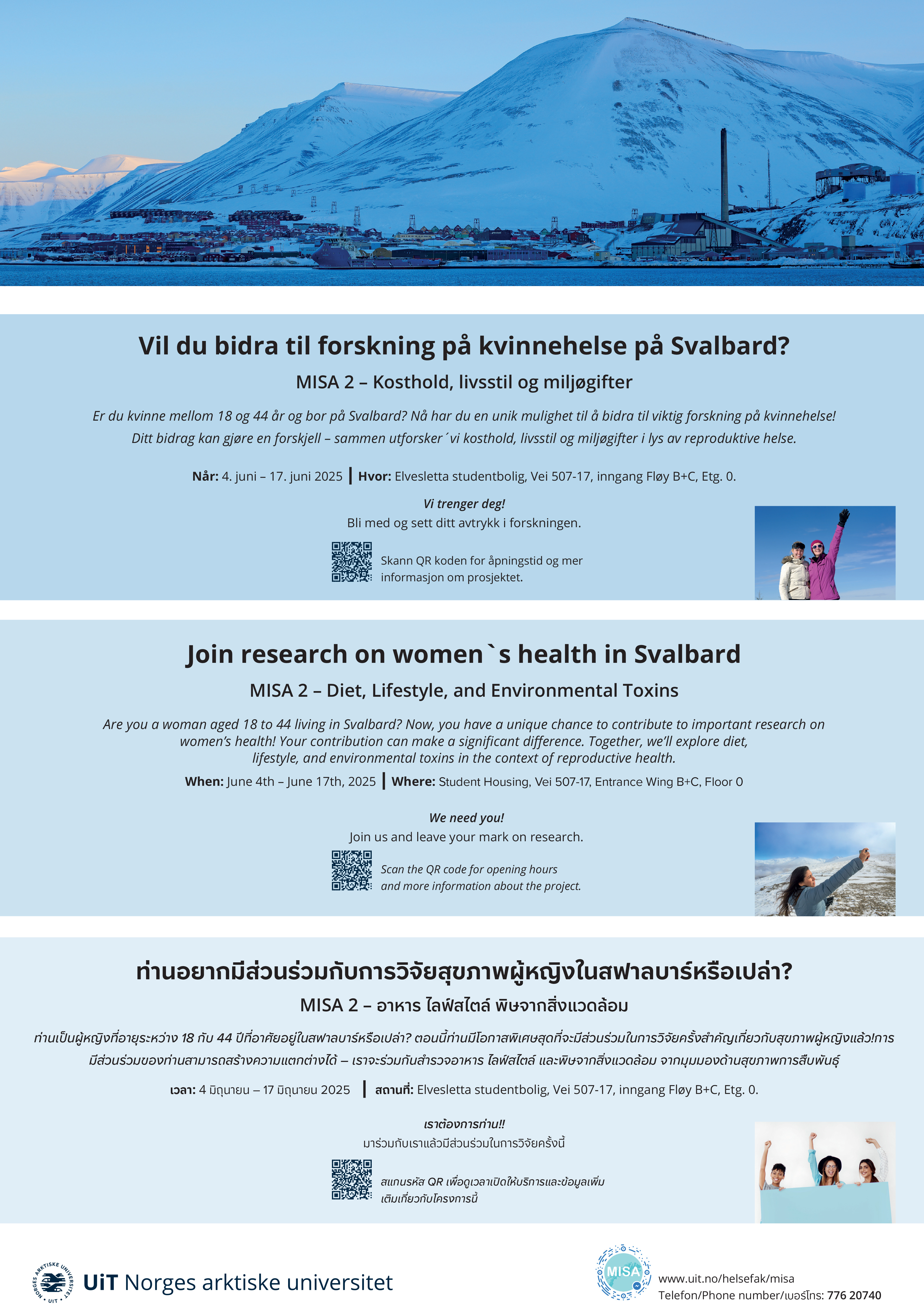Women’s health, diet, and lifestyle are essential for future pregnancies and a child’s health later in life. Now, women in Longyearbyen are invited to participate in a significant study—a health survey conducted on Svalbard for the first time.
The research project MISA 2, led by UiT The Arctic University of Norway, investigates how environmental factors – such as diet, lifestyle, and environmental pollutants – affect women’s health.
“By participating in MISA 2, you contribute to new knowledge about how best to support women’s health so that future children can get a healthy start in life,” says Solrunn Hansen, Associate Professor at UiT and project leader for the MISA study.
She adds: “Our main focus will be on environmental pollutants, analysing various substances found in biological samples, including organic compounds and toxic metals. We will specifically measure fluorinated substances (PFAS) and mercury and examine microplastics in the placenta from pregnant participants who give birth. In light of recent findings in Longyearbyen’s drinking water, we also find it relevant to map manganese levels in the Svalbard population. Manganese and other toxic and essential trace elements are included in the planned portfolio of chemical analyses.”
The study is part of ArcSolution, an international research collaboration funded by the EU’s Horizon programme and led by Nord University. ArcSolution aims to understand how climate change and environmental pollutants affect people and ecosystems in the Arctic.
Data collection in Longyearbyen will take place from 4 to 17 June 2025. During this period, the project team will be on-site to conduct surveys and welcome participants.
The study targets women aged 18–44, both pregnant and non-pregnant. All participants will have a chance to win a 500 NOK gift card. The study will provide unique insight into women’s health in the Arctic. It may serve as a foundation for improved health follow-up, locally, nationally, and internationally.


